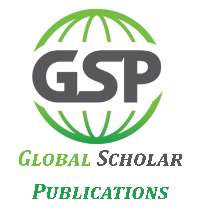Bacteriological analysis of OKPA (Bambara nut Moi Moi) sold in NKWO market of Okija town near Legacy University Okija.
1 Department of Microbiology, Faculty of Biological Science, Federal University of Technology Owerri Imo State, Nigeria.
2 Department of Microbiology, Faculty of Biological Science, Legacy University Okija. Anambra State; Nigeria.
3 Department of Medical Microbiology, Faculty of Medical Laboratory Science, Nnamdi Azikiwe University Awka, Anambra State, Nigeria.
4 Department of Biological Sciences, University of Agriculture and Environmental Science, Umuagwo, Imo state, Nigeria.
Research Article
Global Journal of Research in Chemistry and Pharmacy, 2022, 01(01), 018–022.
Article DOI: 10.58175/gjrcp.2022.1.1.0023
Publication history:
Received on 24 August 2022; revised on 28 September 2022; accepted on 02 October 2022
Abstract:
This research was conducted to ascertain the bacterial content of Okpa(Bambara nut moi moi) sold in Nkwo market in Okija town. This market is strategic as it is a popular market serving Legacy and Madonna Universities and the entire Okija town. Five samples were collected and analyzed using spread plate technique after tenfold serial dilution. Nutrient agar was used to enumerate total colony count while MacCokey agar was used for coliform count. After incubation for 24 hours at 37 ℃, 1.2 x105, 2.1 x 104, 4.5 x 104 and 2.0 x 104 cfu/g were observed for nutrient agar. For the coliform count, 1.1 x 102, 2.1 x 10, 1.2 x 10 and 1.0 102 cf/g were observed on MacConkey agar. The results showed that, though the Okpa were contaminated, the coliform count was not at the level of causing disease. Also, the research revealed that the sources of the pathogenic bacteria are through unhygienic actions of the people that prepares the food and those that hawk them. The research also recommended that adequate sanitary practices and procedures should be adopted during Okpa preparation.
Keywords:
Okpa; Coliform; Dilution; Spread-plate; Incubation
Full text article in PDF:
Copyright information:
Copyright © 2022 Author(s) retain the copyright of this article. This article is published under the terms of the Creative Commons Attribution Liscense 4.0
